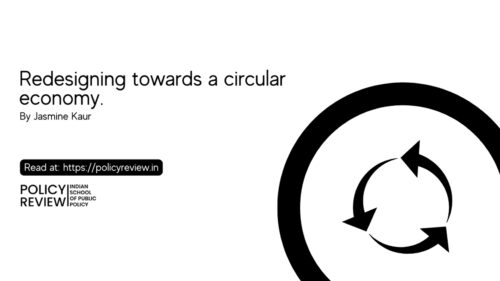
Redesigning towards a circular economy

Recently, the European Union passed a law in favour of a single standard charger mandate for all smartphones, cameras and tablets by 2024. Laptop manufacturers can follow suit by 2026. This decision will go a long way in reducing e-waste amounting to 11,000 tonnes annually for the European Union. The law is based on the principle of Reduce by Design. This principle targets planned obsolescence, a policy of designing products with artificially limited life or frail design, to sell more eventually.
Companies design their products in such a manner that they have a short replacement cycle. This policy has been widely adopted since the 1920s in the automobile industry. Restyling, new replacements and difficulties in repairing were some strategies adopted to increase sales. Every industry has found its way of creating an artificial demand. Fashion utilises the concept of perceived obsolescence, where the customer is made to feel that the designs they own are old despite being functional. Systematic obsolescence is to make the original product difficult to use by limiting spare parts, changing the design of screws or changing standards. Keeping this in mind, the Government of India has constituted a committee to develop a regulatory framework for ‘Right to Repair’ and launched a portal for the same. The important sectors for the initial focus of the framework are farming equipment, mobile phones & tablets, consumer durables, automobiles & automobile equipment. This right will mandate businesses to provide spare parts, tools, and information on how to repair gadgets available to their consumers. This would help increase the lifespan of products and reduce the cost of repairs for products that are no longer covered by warranties and replacements.
A popular essay titled ‘Ending the Depression Through Planned Obsolescence’, by Bernard London in the 1930s, provided the mantra for economic revival – design the products in a way that they have a shorter life, resulting in increased manufacturing, and through more job creation and economic growth. The present concept of GDP focuses on the annual production of goods. These approaches have led to landfills, material extraction and embedded energy waste. We need to shift towards product service systems as a model of economic growth. More products should be repaired, refurbished, re-assembled and upgraded, providing a potential source of revenue for the companies.
Recycling is considered a panacea for end-of-life disposition. What goes unnoticed is that with every round of recycling, the quality of the product falls and more energy is wasted. We also lose some quantity of material through recycling. For instance, an aluminium can with a recycling rate of 90% and a useful product life of 3 months is entirely lost after 4 years. Any product’s embedded energy and carbon can be brought to justice if its life is extended. Creating new products from old ignores the energy used in making the original product, the waste generated in the process and the increase in extraction done to get the raw materials. The approach of designing out waste should be used in eliminating low-quality and low-life products. Everything must start at the design stage. The designer should think about the material and design from the perspective of facilitating material efficiency. Emphasis has to be on using pure and non-toxic material, along with modular and upgradable designs. Redesigning should not be limited to products but also extended to processes.
The Indian government is far behind in utilising the policy tools for creating an ecosystem for circularity. The United States brought in the Right to Repair in 2012. France levies a hefty fine along with a jail term of 2 years for manufacturers planning premature failure of their products. It has also adopted a reparability scoring system. A lawsuit was filed against Apple for planned obsolescence and it was fined Euro 5 million. In 2016, France adopted a law to design processes to make supermarkets donate unsold food instead of destroying them. Presently, Indian laws promoting a circular economy like Plastic Waste Management Rules, 2016, focus on reclaiming the product at the end-of-life. They are trying to close the loop by recycling rather than promoting alternative secondary materials and designs.
The Union Government should implement the Draft Resource Efficiency Policy (DREP) 2019, which aims to incentivize businesses through subsidies and tax holidays to enter re-manufacturing and refurbishing sectors. The National Resource Efficiency Authority that is to be established as per the action plan under DREP should monitor the progress on implementation. Academia and industry should take up initiatives to create an alternative secondary material and design bank. A framework to rate companies on circularity with more weight longevity, durability, and design should be established. Circularity should not just tackle waste but also wastage of embedded energy, virgin raw material and creativity.
A national measuring metric based on Input-Output models needs to be put in place to understand the metabolism of the state. Various circular economy stakeholders need to come together to turn this wheel. R&D by technocrats and academicians should be matched with policy guidelines, industry standards and frameworks. A collaboration of key ministries, think tanks and international organisations will help set up the base for skilling, accounting standards and policy implementation. MoEFCC can work with the Ministry of Skill Development and Entrepreneurship to train policy professionals, design academic programs and upskill the bureaucratic workforce regarding the approaches of a circular economy. Resource Efficiency cell can work with NITI Aayog to establish frameworks and measure progress.
India must build a skilled workforce to drive circularity and to emerge as a leader in sustainability. Setting up a target will act as an anchor for our efforts and will improve resource efficiency at both national and sub-national levels.

